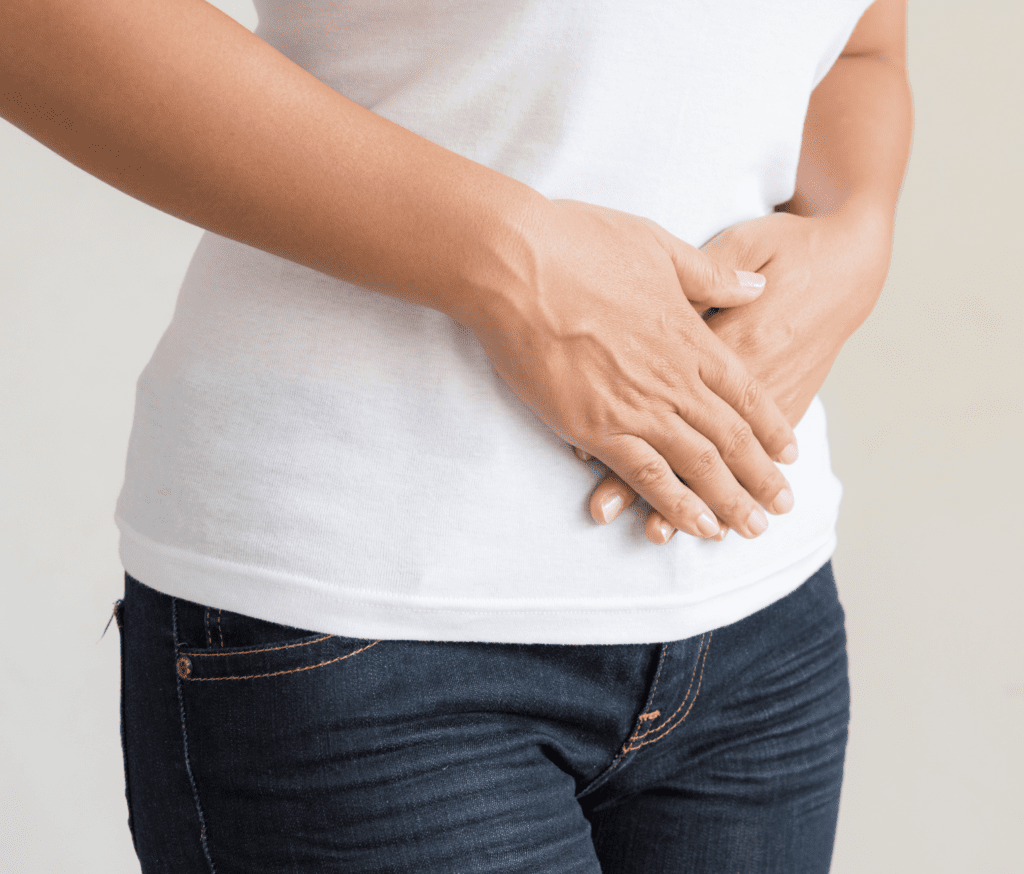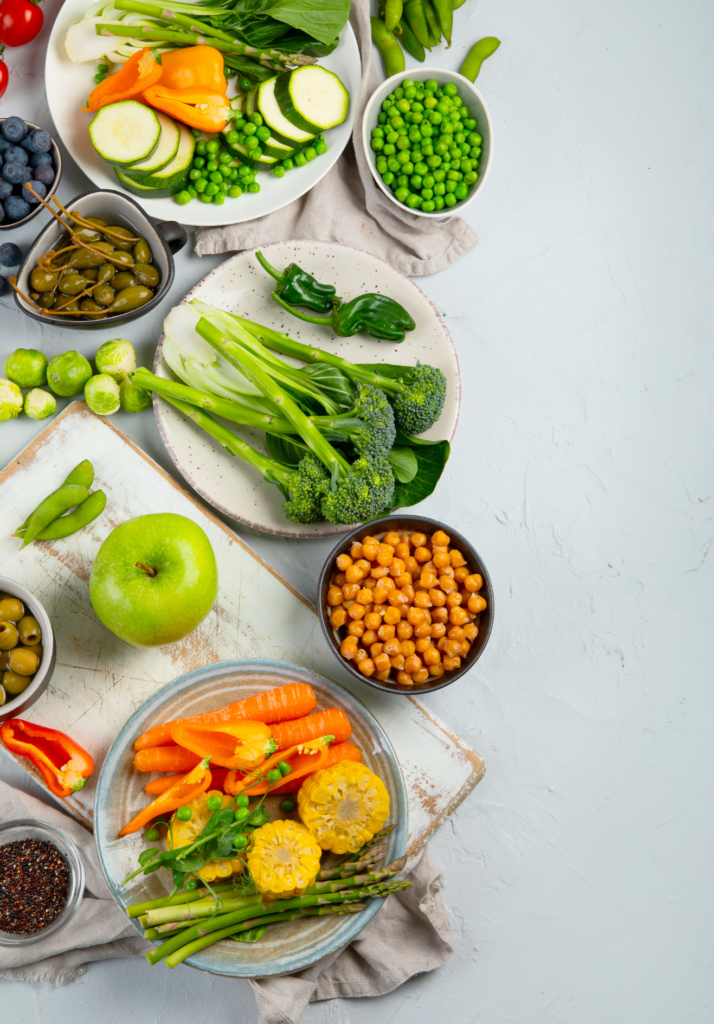Common causes of gas and bloating on a plant-based diet, plus RD-approved tips for banishing bloat for good.
If you’re wondering how to beat the bloat on a plant-based diet, rest assured that you’re not alone. Plant-based foods are full of fiber [Related: 12 high fiber foods] and they ferment easily, which can cause uncomfortable gas and bloat.
But if you suffer from an upset stomach regularly, something else may be going on. Let’s take a look at what causes gas and bloating on a plant-based diet and tips to prevent that uneasy feeling.
Listen to this 5-minute podcast episode to learn more!
What causes gas and bloating?
Most people who eat plants report feeling gas and bloating, especially after consuming plant-based proteins like beans and lentils. So what exactly causes this?

Many plant-based foods, like certain cruciferous vegetables, beans and lentils, are high in carbohydrates [Related: 11 Best Healthy Carbs For Athletes]. This isn’t a bad thing, but some carbohydrates are highly fermentable. The bacteria in the gut break down these carbs through a process called fermentation.
During fermentation, water is drawn into the gut, which causes gas and bloating. This happens to everyone, not just those with digestive issues. That said, some people experience more side effects than others.
And everyone has varying reactions to different foods. For example, some people have an intolerance to fructans, a type of simple sugar found in onions, cabbage, broccoli and other foods. Those with fructan intolerance may experience gas after eating those foods.
Beans, on the other hand, have a fiber called raffinose that is difficult for the body to digest. Some people may experience more gas and bloat after eating beans than others.
While everyone digests these carbohydrates differently, there are some common culprits of gas and bloating that are pretty universal. These include:
- Eating processed foods
- Consuming sugar alcohols, like those in sugar-free products. These are difficult for the gut to digest.
- Eating a fatty meal. Fat takes a long time to break down. As it sits in the stomach, fat can lead to indigestion.
- Certain natural sugars, like fructose and lactose, may be poorly absorbed by some people.
- Sparkling water. The bubbles in the beverage literally create bubbles in the digestive tract, which leads to flatulence.
Do I have IBS?
If you experience gas and bloating regularly, you may wonder if you have IBS (Irritable Bowel Syndrome). IBS is a functional gut disorder. Structurally, everything looks okay in the gut, but those with IBS suffer from recurrent abdominal pain and stool changes at least one day per week in the last 3 months.
There are multiple types of IBS, but most people experience IBS with diarrhea (IBS-D) or IBC with constipation (IBS-C). It is also possible to have a combination of these two conditions.
Those with IBS may also have:
- Abdominal pain
- Cramping
- Gas
- Bloating
- Urgent need to go to the bathroom
- Difficulty emptying bowels
IBS is thought to be a gut-brain disease since stress frequently triggers symptoms. Those who have IBS may also experience migraines, sleep issues, anxiety and depression.
If this sounds like something you’re suffering from, remember that it’s important not to self-diagnose. See a gastroenterologist for a thorough workup to make a proper diagnosis.
How to reduce gas and bloating
So you switched to a plant-based diet because you wanted to eat healthier. You thought it would be good for you, but now you feel like crap from all the GI issues. What can you do to keep your plant-based lifestyle and still feel good? Here are a few suggestions.
- Eat low FODMAP foods
FODMAPs stands for fermentable oligosaccharides, disaccharides, monosaccharides, and polyols. These are simple and complex sugars that cause stomach issues for some people. Here are some examples of where FODMAPs hang out:
- Oligosaccharides: wheat, onions, beans and legumes.
- Lactose: milk and other dairy products
- Fructose: most fruits, vegetables and honey
- Galactans: legumes
- Sorbitol: some fruits and sugar alcohols
These carbs are highly fermentable, and eating a lot of them could cause an uncomfortable feeling for some people. FODMAPs do not bother everyone!

But if you notice that some of these foods bother your stomach, start edging out some of the foods that you are taking in and bringing in other foods that are more well tolerated.
Some low-FODMAP plant-based proteins include smaller quantities of canned beans, like chickpeas, lentils and black beans. FODMAPs are water soluble, so they leach out into the water of canned beans. That’s why canned beans have less FODMAPs than dry.
Firm tofu, tempeh and most plant-based protein powders are also low FODMAP. When choosing a protein powder, Isolates tends to be tolerated better than a concentrates because concentrates contain a fermentable carbohydrate.
Here is a full list of low and high FODMAP foods.
- Try cooking foods, instead of eating them raw
The benefit of eating a plant-based diet is that it’s chock full of fiber, which is great for your heart and digestive tract. The downside is that too much fiber at one time can cause gas and bloating.
A simple way to mitigate the effects of fiber is to cook your food, rather than eat it raw. The cooked food has some of the fiber broken down, which may cause less stomach irritation.
- Drink more water
Are you drinking enough water? Most people don’t and are chronically dehydrated. Not having enough water in your system can cause constipation, and a nasty side effect of constipation is gas and bloating.
Plus, researchers have found that dehydration slows gastric emptying. In other words, not drinking enough water means that food sits in the stomach longer and causes gas and bloating.
- Spread fiber intake throughout the day
Do you eat a big bowl of leafy greens with tons of beans and lentils for lunch? Then you feel gassy and bloated afterwards, and you swear it must be the beans? Not so fast.
It could be the beans, but it also could be the sheer amount of fiber in one meal. By no means am I telling you to eat less vegetables, beans and legumes. But if you find that they upset your stomach, you may want to space out the intake of these foods.
Instead of eating them all at once, try consuming some greens in your smoothie in the morning, then add beans to lunch and lentils to dinner. Some people who are sensitive to fiber need to eat smaller amounts at each sitting.
- Meet with a gastroenterologist or GI Dietitian
If all else fails and you can’t pinpoint the cause of your issues, schedule an appointment with a gastroenterologist or GI Dietitian. A gastroenterologist can make sure you don’t have any underlying conditions.
And a GI Dietitian will do a dietary recall and help eliminate trigger foods from your diet. They will work with you to find the foods that work best for you on a plant-based diet.


0 Comments